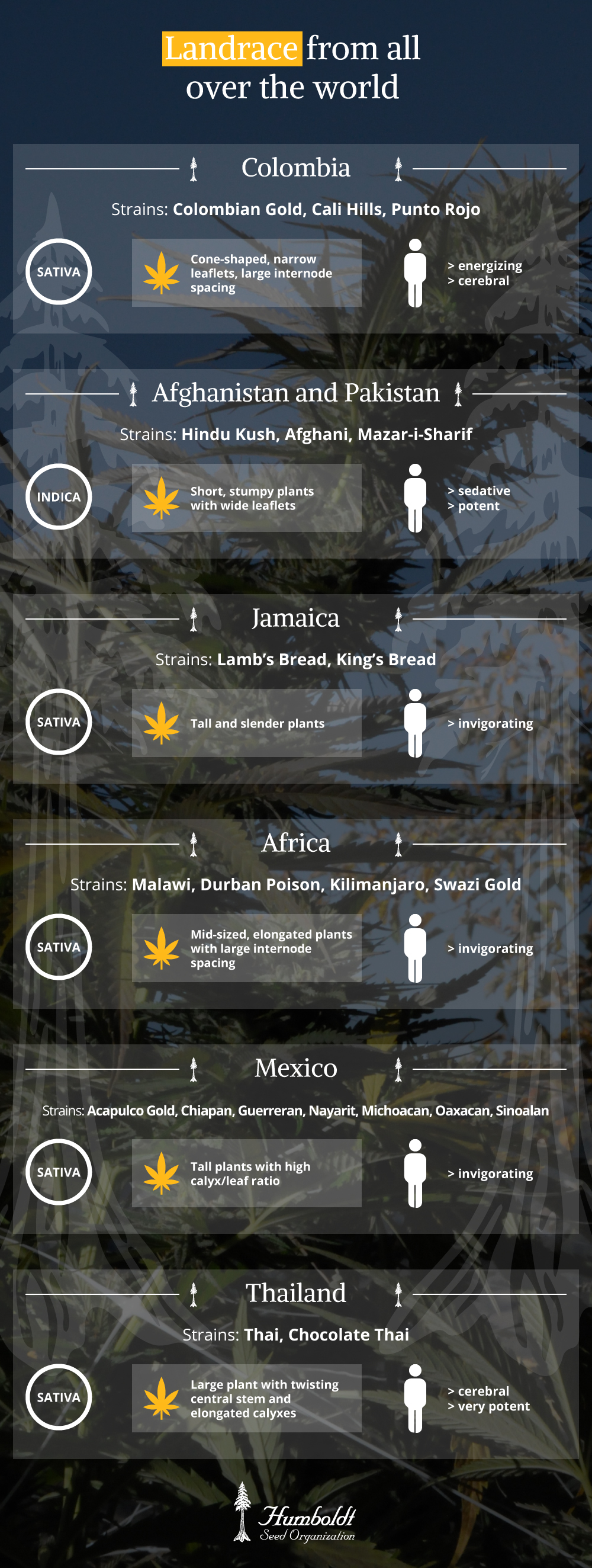Long before modern hybrids took over the market, even before Skunk genetics delighted us with their intense aroma or before autoflowering strains blew our minds, Landraces already existed. In fact, most genetics nowadays available on the market derive from cannabis Landrace strains. Ancient strains that have adapted to the different weather conditions and have been grown worldwide by traditional growers for hundreds of years.

What are cannabis Landrace genetics?
The origins of cannabis are known to be in the Himalayas, from where it gradually spread across the globe with the help of men. Even before man started growing cannabis, it grew wild in nature and, despite not being subject to any selection process and consequently there being a much greater morphological diversity, some features did get fixed through the plant's evolutionary process in interaction with the environment. The first recorded breeding process took place some 6 500 years ago in Mongolia, a finding made by Russian botanist N.I.Vavilov. From that moment on, growers all over the world started to cultivate and select cannabis populations, eliminating the individuals that didn't meet the desired parameters (aroma, size, yield, vigor) and giving way to what we know as Landrace strains. So cannabis Landraces are those which have been shaped by people living in geographical areas where growing cannabis has been an ancient practice. A Landrace results from the plant's natural adaptation to the environment and from the thorough selection made by the grower. Their gene pool is still large because they reproduce through pollination out in the open and many males and female take part in the process, resulting in a high genetic variability. In spite of their heterogeneity, Landraces share many morphological traits that distinguish them as a group, for growers make selections according to their objectives. They are regarded as the first step in cannabis domestication.
Indica and Sativa Landraces
Nowadays, most strains on the market are hybrids deriving from these indigenous strains and, since breeders have strived to group the best traits of each breed, it is rather difficult to find 100 % Sativa or Indica genetics. However, not long ago, back in the '60s and '70s, most of the available marijuana came from Landrace strains that, thanks to the interaction with the environment and the growing conditions, had very concrete features. They were so different, in terms of taste, morphology or effect, that Landraces were divided into two famous groups: Indica and Sativa.
Why are Landraces so important?
Compared to modern strains, one might say that the quality offered by Landraces was rather low because, thanks to the work breeders have carried out in the last decades, the traits we seek in cannabis (flavor, yield, effect…) have now been boosted. However, Landrace strains do show some advantages modern strains don't, such as a higher rusticity. While it's true their genetic heterogeneity implies a lower stability, Landraces are more resistant to harsh weather conditions and adapt better to the environment. Thanks to their gene pool, they can easily face not only weather fluctuations but the threats of the environment as well. Landrace strains add also important value to the modern breeding context because, thanks to their large gene pool, they put many genes at everyone's disposal. We could say that Landraces show a genetic wealth that modern hybrids have lost. One cannot forget that these strains have been grown during thousands of years, so their traits are impossible to replicate.
Which types of Landrace are there?
The name of Landraces normally makes referent to the geographical location. Therefore, we find Landrace strains such as Acapulco Gold or Panama Red. Knowing all the Landraces in the world is almost impossible. However, below is a brief outline of the most famous ones within the cannabis community.






Give us your feedback
Your rating (between 1 and 5)
1 2 3 4 5Leave a comment